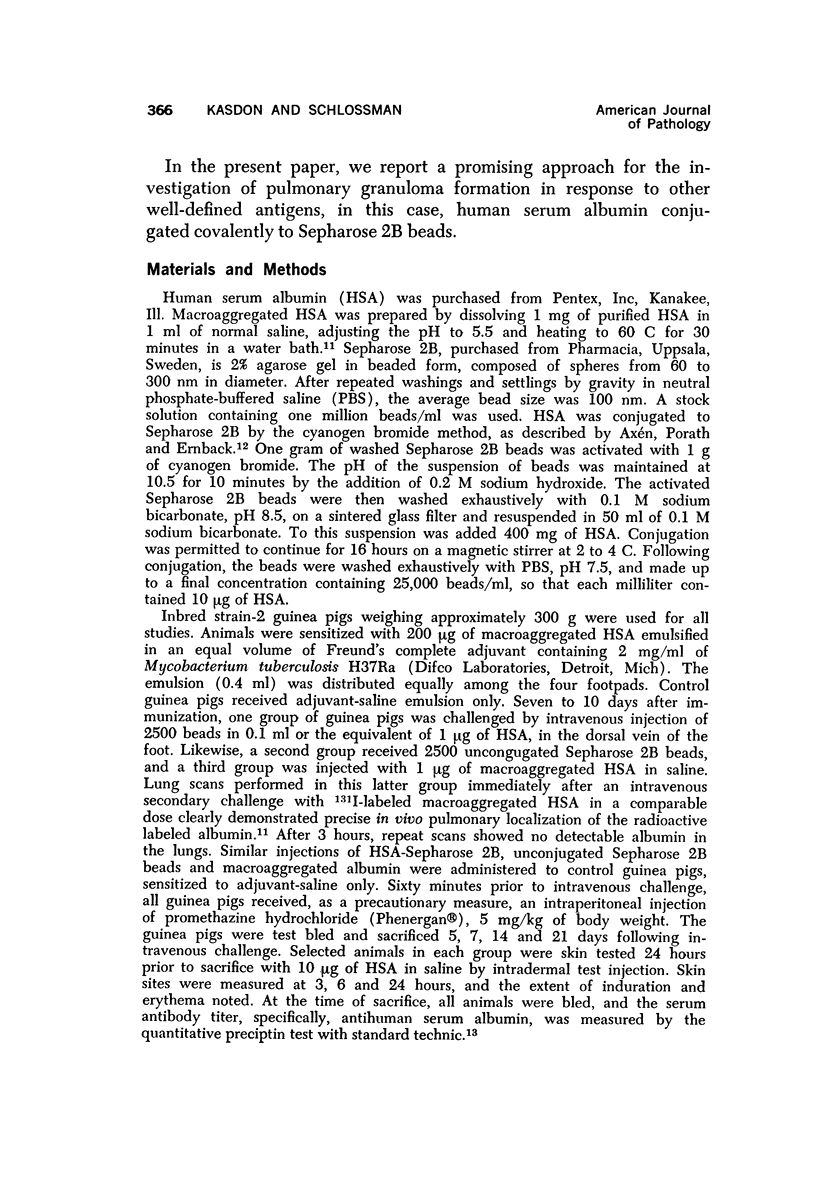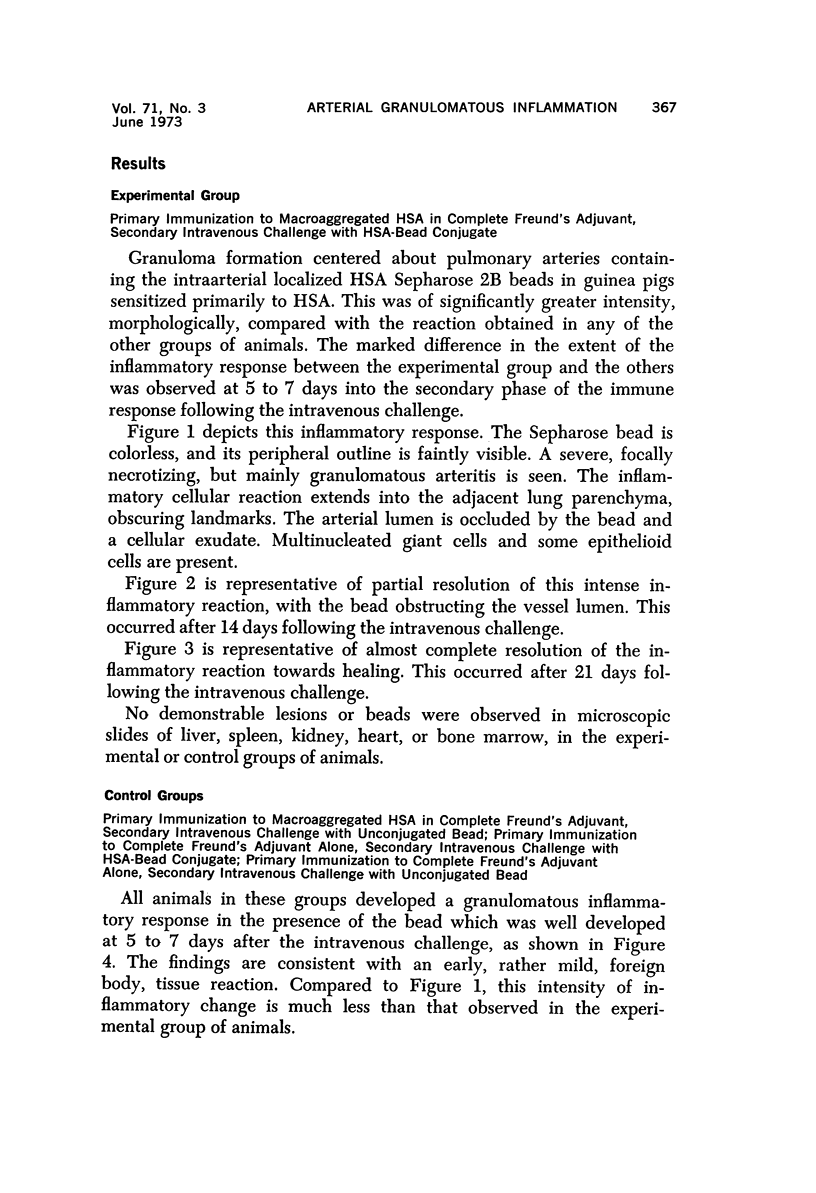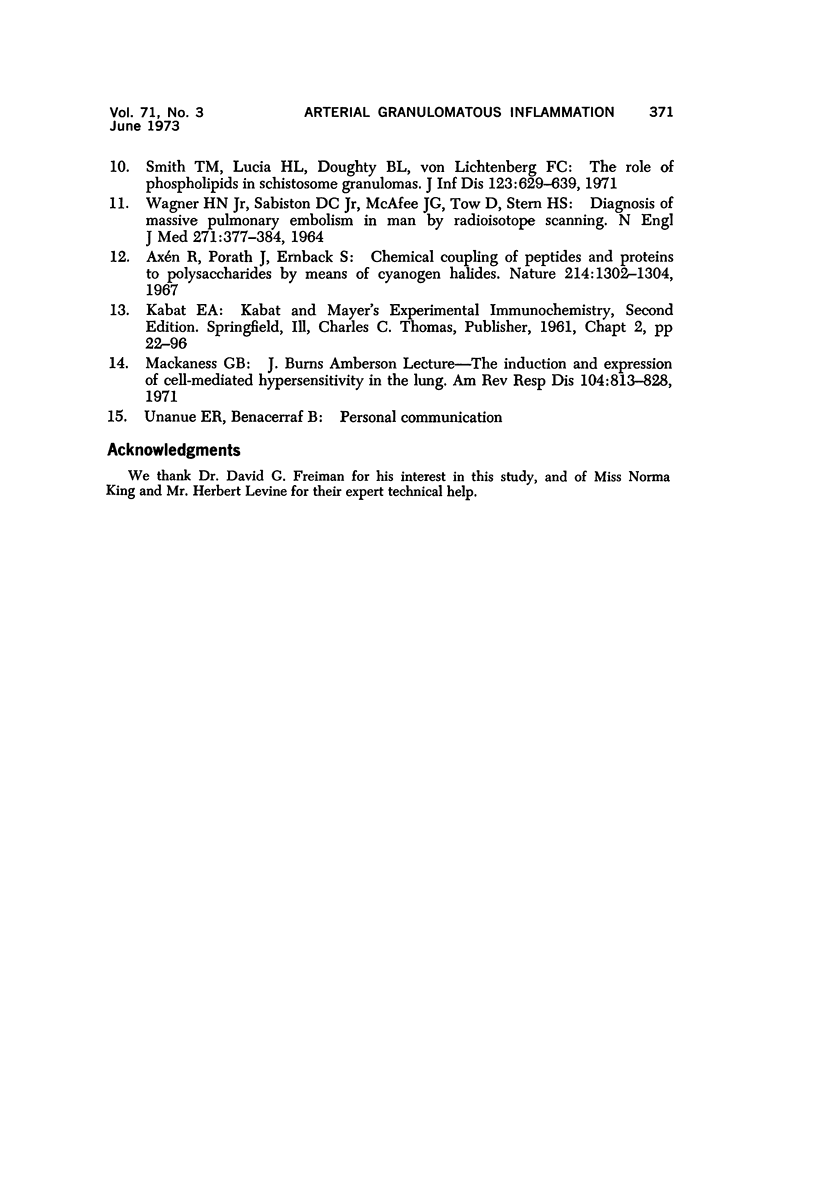Abstract
An experimental method to investigate pulmonary granuloma formation in the guinea pig was established. Animals sensitized to human serum albumin (HSA) and challenged intravenously with HSA covalently linked to Sepharose 2B beads developed a specific granulomatous response. This intense pulmonary arterial, focally necrotizing, but mainly granulomatous inflammatory reaction developed 5 to 7 days after the administration of the HSA-bead conjugate. Unsensitized animals did not show such extensive inflammation, but rather exhibited a typical foreign body reaction to the bead. In both the experimental and control groups, the inflammatory response was indistinguishable at 14 and 21 days. Thus the initial acute inflammatory reaction was seen only in specifically sensitized animals. On the other hand, HSA alone produced no demonstrable inflammatory lesion. These observations suggest that locally retained antigen may trigger antigen-specific T (thymus-dependent) lymphocytes to release mediators which contribute to granuloma formation.
Full text
PDF









Images in this article
Selected References
These references are in PubMed. This may not be the complete list of references from this article.
- Axén R., Porath J., Ernback S. Chemical coupling of peptides and proteins to polysaccharides by means of cyanogen halides. Nature. 1967 Jun 24;214(5095):1302–1304. doi: 10.1038/2141302a0. [DOI] [PubMed] [Google Scholar]
- Boros D. L., Warren K. S. Specific granulomatous hypersensitivity elicited by bentonite particles coated with soluble antigens from schistosome eggs and turcle bacilli. Nature. 1971 Jan 15;229(5281):200–201. doi: 10.1038/229200a0. [DOI] [PubMed] [Google Scholar]
- Domingo E. O., Warren K. S. The inhibition of granuloma formation around Schistosoma mansoni eggs. 3. Heterologous antilymphocyte serum. Am J Pathol. 1968 Mar;52(3):613–631. [PMC free article] [PubMed] [Google Scholar]
- Domingo E. O., Warren K. S. The inhibition of granuloma formation around Schistosoma mansoni eggs. II. Thymectomy. Am J Pathol. 1967 Nov;51(5):757–767. [PMC free article] [PubMed] [Google Scholar]
- Epstein W. L. Granulomatous hypersensitivity. Prog Allergy. 1967;11:36–88. [PubMed] [Google Scholar]
- Mackaness G. B. The J. Burns Amberson LECTURE The induction and expression of cell-mediated hypersensitivity in the lung. Am Rev Respir Dis. 1971 Dec;104(6):813–828. doi: 10.1164/arrd.1971.104.6.813. [DOI] [PubMed] [Google Scholar]
- Present D. H., Lindner A. E., Janowitz H. D. Granulomatous diseases of the gastrointestinal tract. Annu Rev Med. 1966;17:243–256. doi: 10.1146/annurev.me.17.020166.001331. [DOI] [PubMed] [Google Scholar]
- Smith T. M., Lucia H. L., Doughty B. L., von Lichtenberg F. C. The role of phospholipids in schistosome granulomas. J Infect Dis. 1971 Jun;123(6):629–639. doi: 10.1093/infdis/123.6.629. [DOI] [PubMed] [Google Scholar]
- Von Lichtenberg F., Smith T. M., Lucia H. L., Doughty B. L. New model for schistosome granuloma formation using a sluble egg antigen and bentonite particles. Nature. 1971 Jan 15;229(5281):199–200. doi: 10.1038/229199a0. [DOI] [PubMed] [Google Scholar]
- WAGNER H. N., Jr, SABISTON D. C., Jr, MCAFEE J. G., TOW D., STERN H. S. DIAGNOSIS OF MASSIVE PULMONARY EMBOLISM IN MAN BY RADIOISOTOPE SCANNING. N Engl J Med. 1964 Aug 20;271:377–384. doi: 10.1056/NEJM196408202710801. [DOI] [PubMed] [Google Scholar]
- Warren K. S., Domingo E. O., Cowan R. B. Granuloma formation around schistosome eggs as a manifestation of delayed hypersensitivity. Am J Pathol. 1967 Nov;51(5):735–756. [PMC free article] [PubMed] [Google Scholar]
- von LICHTENBERG Host response to eggs of S. mansoni. I. Granuloma formation in the unsensitized laboratory mouse. Am J Pathol. 1962 Dec;41:711–731. [PMC free article] [PubMed] [Google Scholar]






